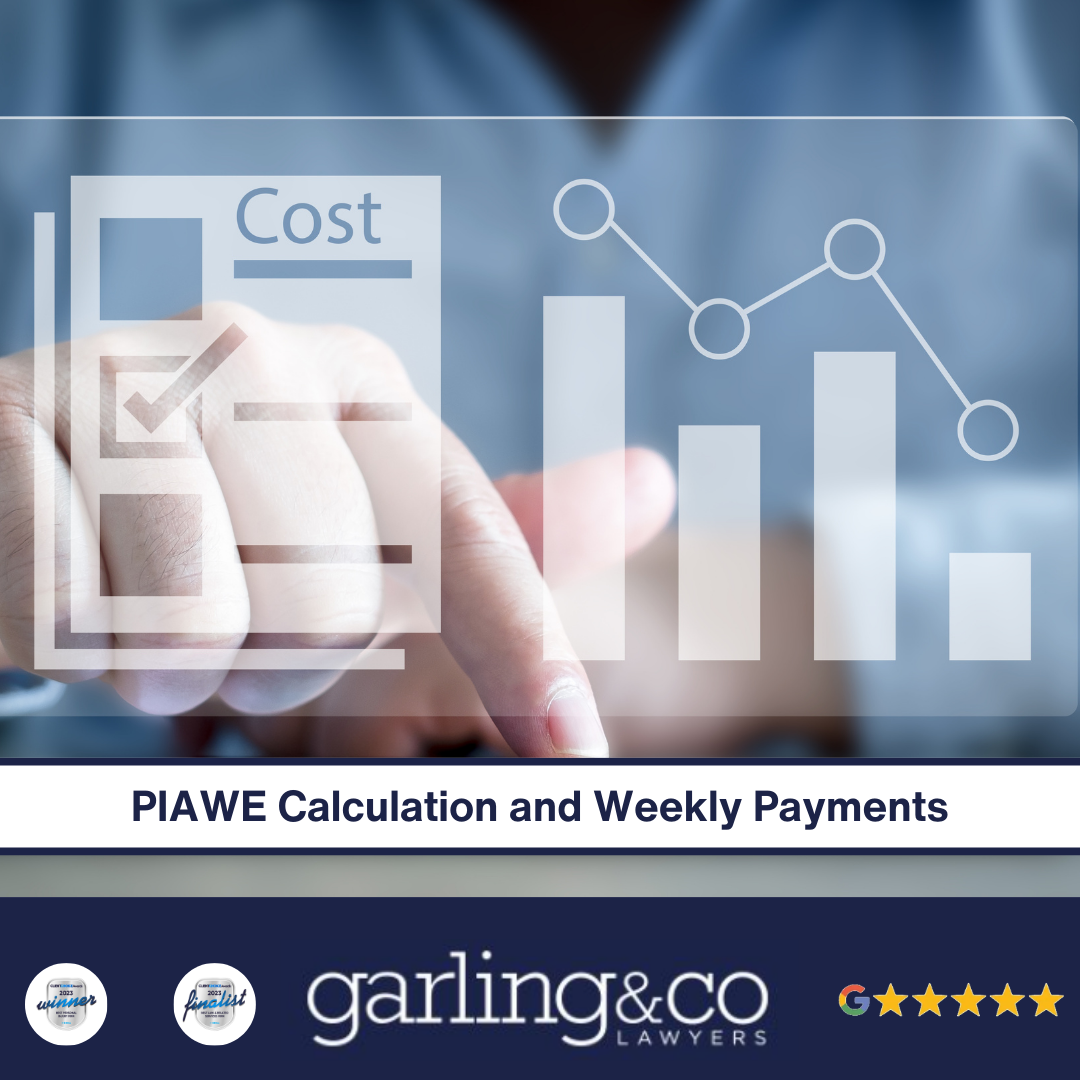
If you disagree with the amount calculated by the insurer, you can challenge it.
What is PIAWE?
PIAWE (pre-injury average weekly earnings) is defined as; “The weekly average of the gross pre-injury earnings received by the worker during the period of 52 weeks before the injury in any employment in which the worker was engaged at the time of injury.”
Based on the definition of PIAWE, the insurer is required to obtain a copy of the pay slips for the 52 weeks immediately prior to the injury and calculate the average gross weekly earnings received by the worker during that period.
How Is PIAWE Calculated?
PIAWE is a fairly simple calculation however insurers regularly get it wrong.
It includes the calculation of “pre-injury average weekly earnings” and also the workers ordinary earnings as well as any overtime and/or shift allowance payment. The insurer must make a decision in writing in relation to the PIAWE rate and notify the worker of this decision.
What if I disagree with my PIAWE?
If you disagree with the amount calculated by the insurer, this can be challenged through the Workers Compensation Commission and you should discuss this with a lawyer.
Recent PIAWE Changes
The significant change that has been made by the amending regulations is that for those that are injured on or after 26 October 2018, overtime and shift allowances are no longer excluded from the calculation of the PIAWE rate after receiving 52 weeks of weekly compensation payments.
For anyone injured prior to 26 October 2018, the PIAWE is recalculated after you have received 52 weeks of weekly compensation benefits to reduce the PIAWE rate by excluding any overtime or shift allowance from the calculation.
This often resulted in a significant reduction in the weekly amount of compensation entitled to an injured worker. Often workers rely heavily on receiving overtime and shift allowance in their weekly wage.
This has been recognised by the government and changes made to the calculation of the PIAWE rate but only for people injured on or after 26 October 2018.
What Are The 4 Systems Of Determining the PIAWE Rate?
There are therefore 4 different systems for determining the PIAWE rate, depending on the date and circumstances of your injury.
- Coal Miners have a different method of calculating average weekly earnings.
- Exempt workers under the Workers Compensation Act (such as emergency workers) have a different method of calculating average weekly earnings.
- Those workers injured before 26 October 2018 as noted above.
- Those workers now injured on or after 26 October 2018 as noted above.
The government has simplified the calculation of weekly payments and made it much fairer by allowing a worker to receive essentially 80% of their pre-injury average weekly earnings including overtime and shift allowance.
PIAWE Calculation Examples
Example 1:
If you are trying to figure out your compensation for the first 52 weeks you will need to include your pre-injury ordinary earnings and any overtime or allowances.
| Week 1 | |
| Ordinary Earnings / Week: | $800.00 |
| Overtime / Week: | $300.00 |
| Allowances / Week: | $45.00 |
| Total: | $1145.00 |
| Week 2 | |
| Ordinary Earnings / Week: | $900.00 |
| Overtime / Week: | $150.00 |
| Allowances / Week: | $45.00 |
| Total: | $1095.00 |
You may have earnt a different amount of money each week. In order to calculate the average you will need to get the totals from the 52 weeks prior to the injury date. You then need to add the totals together and divide them by 52.
Total earnings for 52 weeks ÷ 52= PIAWE
Example 2:
If you are trying to figure out your compensation after the first 52 weeks you will need to exclude any overtime and allowances. You can only use your ordinary earnings.
| Week 1 | |
| Ordinary Earnings / Week: | $800.00 |
| Total: | $800.00 |
| Week 2 | |
| Ordinary Earnings / Week: | $900.00 |
| Total: | $900.00 |
In order to calculate the average you will need to get the totals from the 52 weeks prior to the accident date. You then need to add the totals together and then divide them by 52.
Total earnings for 52 weeks ÷ 52 = PIAWE
If you have any questions in relation to the calculation of the PIAWE rate please do not hesitate to contact us to discuss further.












